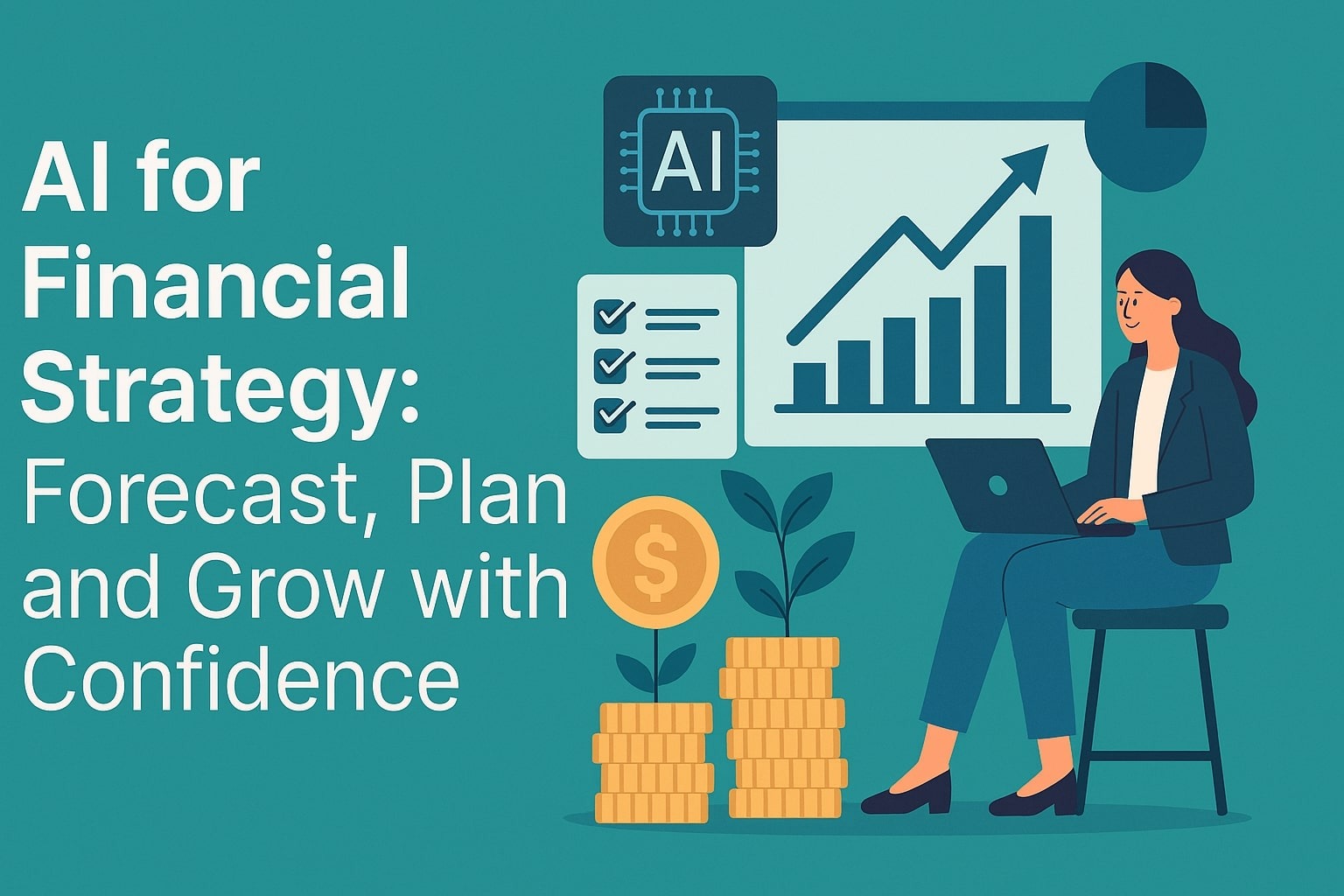AI for Financial Strategy: Forecast, Plan, and Grow with Confidence

AI in finance is no longer a buzzword—it’s a core strategy for forward-thinking companies. While spreadsheets rely on historical data and guesswork, AI-driven financial planning provides dynamic, data-backed forecasts in real time.
For Managed Service Providers (MSPs), the difference is transformative. Companies using AI for forecasting report a 20% reduction in overall forecast error. Specifically, MSPs leveraging AI-powered revenue forecasting achieve accuracy rates of 84.3%, significantly higher than traditional approaches.
How Does AI Transform Financial Planning?
AI shifts financial strategy from reactive number-crunching to proactive intelligence. It’s a fundamental leap—from static reports to adaptive, real-time decision-making.
AI automation in IT services enables finance teams to move beyond manual calculations. Nearly 90% of MSPs acknowledge the need to improve their AI capabilities, showing clear potential for early adopters to gain a competitive edge.
What Are the Core Components of AI Financial Forecasting?
Modern AI financial systems rely on three core components:
- Pattern Recognition: AI detects trends and patterns across markets and seasons that humans and spreadsheets often miss.
- Predictive Analytics: Instead of focusing on the past, AI predicts future outcomes with measurable confidence.
- Real-Time Adaptation: Unlike static models, AI continuously adjusts its forecasts based on fresh inputs and external data.
These systems offer intuitive dashboards, making it easy for teams to turn complex data into strategic insights.
Why Is AI Crucial for P&L Forecasting and Analysis?
Traditionally, Profit & Loss (P&L) statements have been backward-looking. AI enables forward-looking analysis that turns P&L from historical summaries into strategic planning tools.
MSPs using intelligent P&L analysis have uncovered new revenue opportunities and identified hidden cost drains. Smart P&L forecasting with AI evaluates variables such as:
- Customer acquisition and churn trends
- Market dynamics and competitor movements
- Seasonal patterns specific to the industry
- Macroeconomic indicators influencing revenue
As a result, AI-driven forecasting improves revenue prediction accuracy from typical 60–70% to over 84%.
How Does AI Help Optimize Expenses and Budgeting?
AI enables predictive expense management by identifying future spending needs before they occur.
Instead of reacting after the fact, finance leaders use AI to:
- Predict budget fluctuations ahead of busy seasons
- Optimize vendor contracts based on payment volume and timing
- Compare spending patterns across industry peers
It’s like adding an always-on financial advisor capable of processing vast amounts of real-time data for smarter budget decisions.
How Does AI Improve Cash Flow Forecasting for MSPs?
Cash flow management is one of the most complex aspects of business finance. Traditional methods assume steady payments and consistent expenses, which rarely reflects reality.
AI in finance overcomes this by modeling:
- Client payment behaviors
- Industry-specific cycles
- Economic indicators influencing cash flow
- Unexpected expenses and their probabilities
For MSPs, AI-driven cash flow forecasting reduces errors by 20–50%, directly improving inventory availability, resource planning, and overall financial resilience.
What Is Scenario Planning with AI in Finance?
Scenario planning used to involve manually building “Best Case,” “Worst Case,” and “Realistic” models in spreadsheets. Today, AI simulates thousands of complex scenarios in seconds.
Example scenarios include:
- What if a top client reduces their contract by 30%?
- What if a new competitor enters the market?
- What happens if interest rates change?
AI models not only simulate outcomes, but also recommend strategic responses for each case.
How Can MSPs Start Implementing AI Financial Strategy?
Phase 1 – Build a Strong Foundation
Begin with a data audit. Identify gaps in current forecasts and assess where decision-making lacks reliable insights. Clean, structured data is essential to accurate AI outcomes. Most MSPs find their data is more usable than they expect once properly organized.
Phase 2 – Launch a Pilot Program
Start with one financial function—such as revenue forecasting or expense management. This controlled environment helps teams learn the technology, understand outputs, and measure performance.
Pilot programs reduce risk, encourage adoption, and allow you to scale AI across your organization with confidence.
Where Can MSPs Learn More About AI in Finance?
Build IT LIVE 2025 is one of the leading MSP leadership conferences in the United States. It focuses on emerging financial technologies and the practical implementation of AI and automation.
This year’s keynote speaker is Baxter Lanius, CEO of Alternative Payments, who will present insights into intelligent financial systems designed specifically for MSP businesses.
What Is the Future of Finance for MSPs?
AI in finance is already transforming how businesses plan, forecast, and grow. Those who embrace AI tools now will lead the industry as the market continues to evolve.
The choice is clear: remain dependent on manual spreadsheets or adopt AI-powered systems to drive precision, performance, and profitability.
Ready to Master AI Financial Strategy?
Register now for Build IT LIVE 2025 and learn directly from experts like Baxter Lanius. Gain actionable insights into AI-driven revenue forecasting, cash flow modeling, and scenario planning tailored for MSPs.
Your financial future doesn’t have to be uncertain. With AI, you can forecast with accuracy, plan with clarity, and grow with confidence.